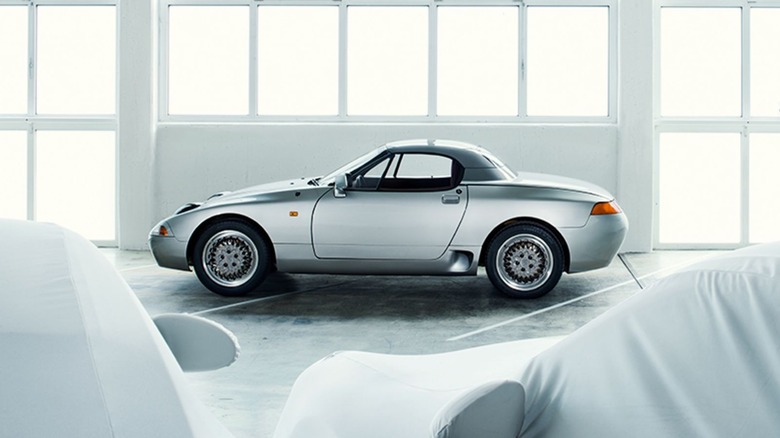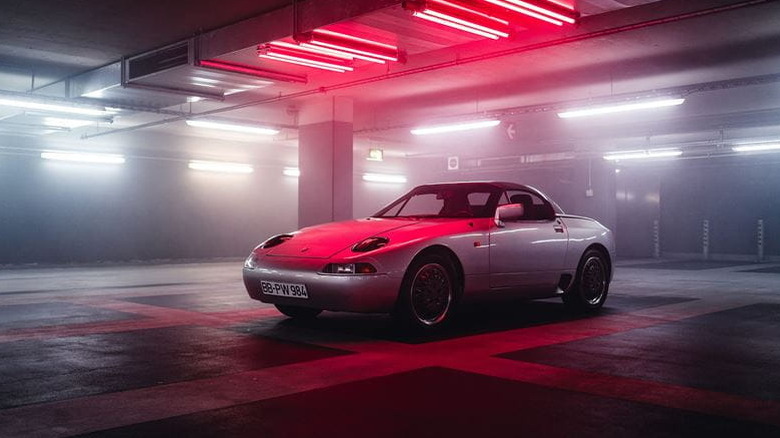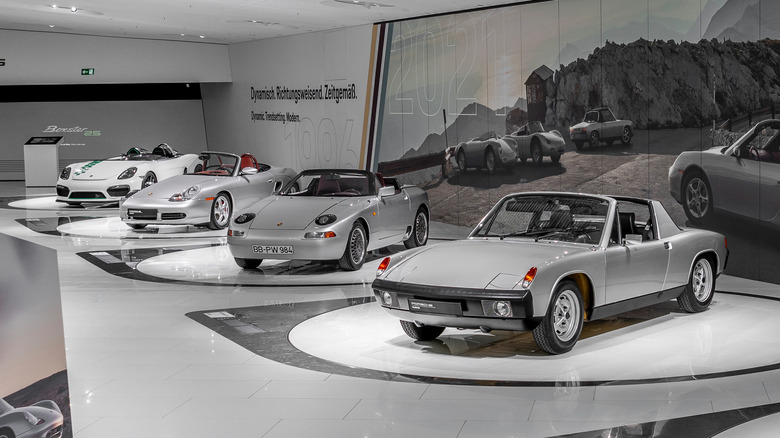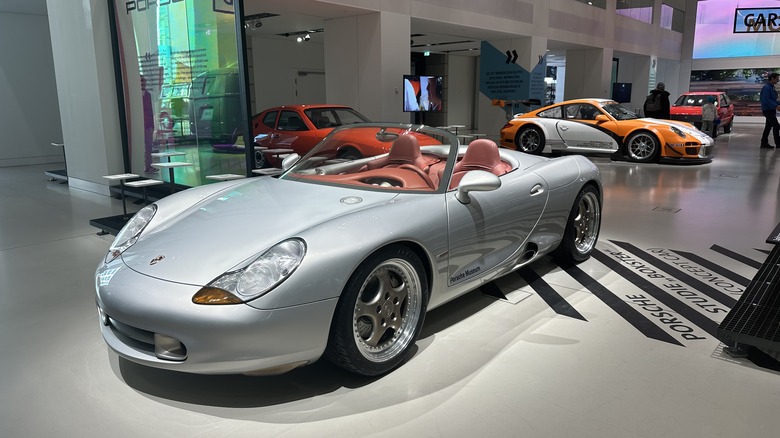The Forgotten Porsche Roadster That Would Have Been A Blast To Drive
Imagine if Porsche sold a compact, lightweight and affordable convertible sports car to rival the Mazda Miata. Rewind to 1984 and, for three tantalizing years, the legendary automakers nearly did exactly that.
Called the 984 Concept, the two-seater was created by Porsche Development Centre in Weissach, Germany (via Autoblog). Had the project gone according to plan, it might have arrived a few years before the first-generation Miata launched in 1989. Instead of enjoying the lightweight roadster market almost to itself for over 30 years, Mazda would have been force to go toe-to-toe with Porsche. And who knows what might have happened if other manufacturers decided to join in.
Intended to replace the aging Porsche 924, a 2+2 coupe that had been around since 1976, the 984 featured a folding hard-top roof, and still weighed a couple hundred pounds less than the original Miata. Porsche claims it tipped the scales at just 1,940 pounds, notes Autoblog.
A project with an unexpected partner
Unlike other manufacturers, Porsche likes to talk about its concepts — and there are some bizarre ones, including the 984, which was "conceived as a lightweight, aerodynamic roadster, it was designed to provide an affordable entry-point into the Porsche range."
Porsche explains that its engineers wanted the 984 to "major on fun," so the weight was kept low, and the power output was a modest 133 hp fueled by an air-cooled, 2-liter, four-cylinder boxer engine mounted in the rear of the car. But the engine in question has an unexpected backstory.
In the early 1980s, the Spanish automaker "Seat" contracted Porsche to develop an inline four-cylinder engine for the then-new Ibiza, Malaga and Ronda models, according to Stutt Cars. This was when Seat was in the process of severing ties with its parent Fiat, and instead formed an alliance with Volkswagen.
After the engine, Porsche and Seat began work on a lightweight sports car, then known as the PS, which never materialized, but was instead taken in-house by Porsche and later became known as the 984 "Junior."
Efficient and affordable
Porsche says the 984, which had a top speed of 137 mph, was "designed to appeal to a young, sporty clientele," and was to be priced at 40,000 German marks. The company adds that "low fuel consumption was also defined as a development objective," and that "a convertible version with an innovative folding hard-top was envisioned, as well as an all-wheel-drive model for motor racing." The car is pictured above at the Porsche Museum in Stuttgart, as part of an installation celebrating the 25th anniversary of the Boxster it helped inspire.
The 984 was intended to sit below the faster and more expensive 924 and 944. It also shared some design traits with the 928, like the circular headlights, which sat on a wedge-shaped hood and front fenders. The horizontal turn signals below are also similar to those of the 928 — a car we consider to be the most underrated Porsche of all time. Similar lamps also appear on the 993-generation 911 that arrived in the early 1990s.
Inside, the 984's interior featured Porsche's iconic dashboard, with six dials lined up ahead of the driver, and a two-spoke steering wheel. The rest was a collection of parts borrowed from other models, says Autoblog, as is often the case for prototypes not yet ready for mass-production.
A victim of Black Monday
Unfortunately, the promise of a lightweight, reasonably priced Porsche roadster never materialized. As is all-too-often the case, the 984 arrived at the wrong time, and was born into an economy that wasn't ready for it. As Porsche says: "The project was shelved because of the plummeting U.S. dollar in 1987."
More specifically, blame can lie with October 19, 1987, a date better known as "Black Monday," when the Dow Jones Industrial Average fell over 22 percent. Suddenly, a small and low-powered sports car carrying a premium badge didn't seem quite so appealing, and Porsche canceled its 984 project in early 1988.
But the 984's untimely demise wasn't for nothing, and Porsche returned to the (relatively) affordable convertible sports car market with the Boxster, which was shown off as a concept, pictured above, at the 1993 Detroit Motor Show. Production began in 1996, then the hard-topped Cayman sibling arrived in 2005. Both are still in production today.



